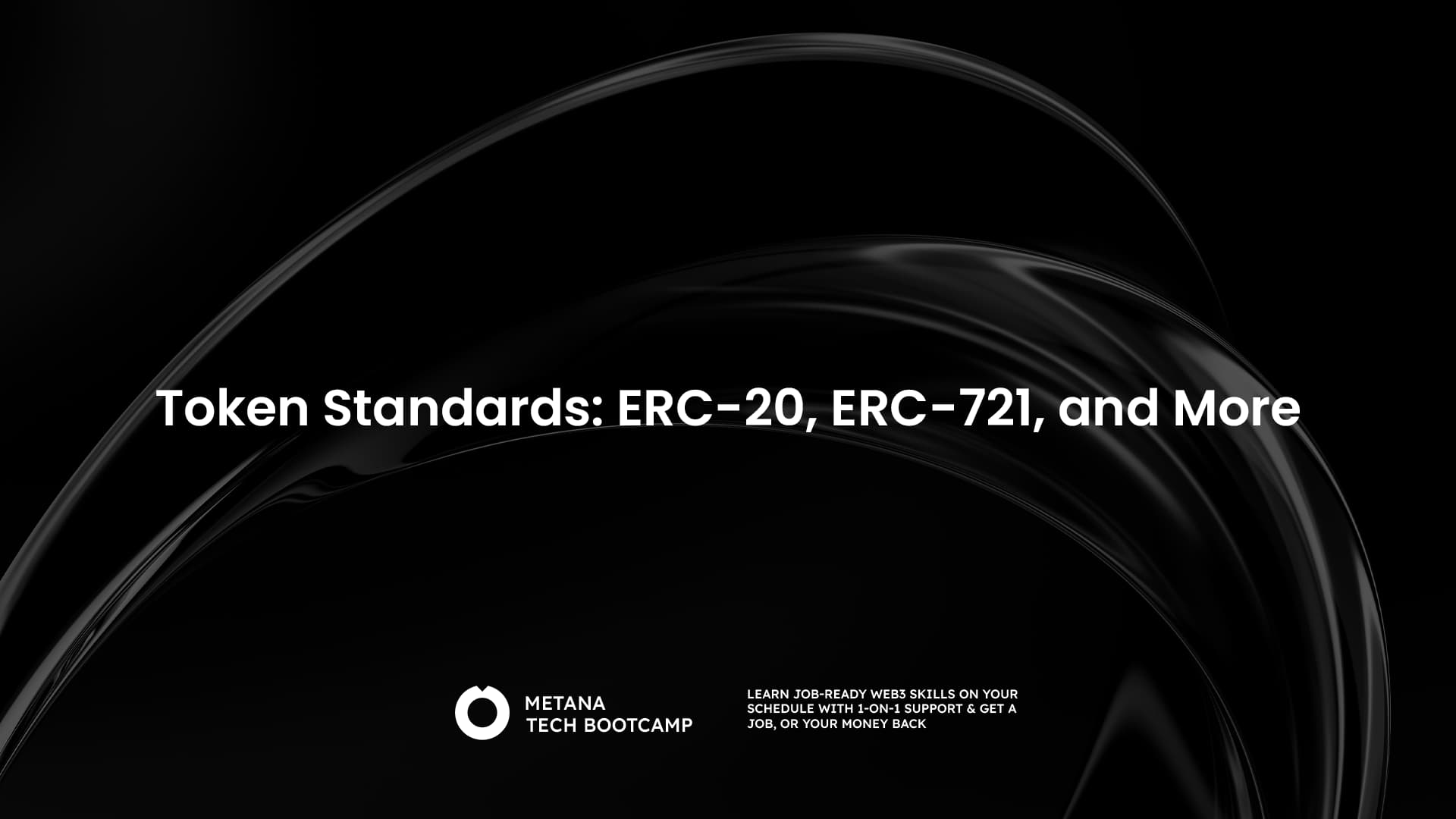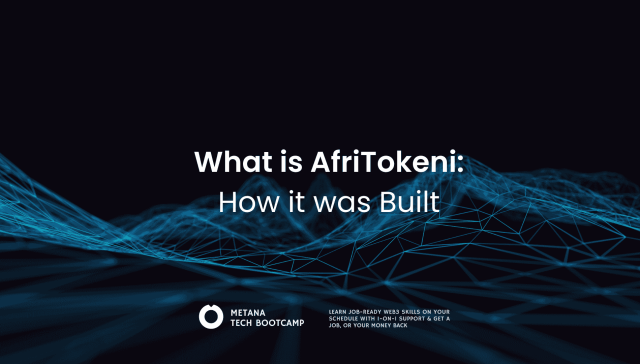Imagine a world where anything digital can be securely owned and traded. Artwork, in-game items, concert tickets, even your loyalty points – all represented by unique digital tokens stored on a transparent ledger.
This is the power of blockchain technology, and token standards, such as ERC tokrens, are the key that unlocks this potential.
In the realm of blockchain, a token is a digital unit of value that lives on a specific blockchain network. Think of it like a virtual coin or a digital certificate that represents something of value. But unlike cryptocurrencies like Bitcoin, tokens can represent a wide variety of assets, both digital and physical.
This is where token standards come in. These are sets of rules that define how tokens are created, managed, and interacted with on a blockchain. They act like a universal language, ensuring that different applications and platforms can understand and interact with each other’s tokens seamlessly.
ERC tokens, particularly those following the ERC-20 and ERC-721 standards, have become widely adopted, enabling interoperability and innovation across the blockchain ecosystem.
Why Use Token Standards?
Just like following a Lego manual makes building easier and avoids a frustrating mess of mismatched pieces, token standards offer several benefits:
- Interoperability: Tokens built using the same standard can interact with each other seamlessly. Imagine using Lego bricks from one Creator set to build something awesome with another –– that’s the power of interoperability!
- Security: Established standards are rigorously tested and reviewed by security experts, minimizing vulnerabilities. This means your Lego castle is less likely to be raided by digital dragons.
- Efficiency: Developers don’t have to reinvent the wheel every time. By using existing code and tools based on the standard, they can build faster and more efficiently. Think of it as having pre-built Lego modules to save time and frustration.
- Transparency: Clear rules defined in the standard build trust and understanding. Everyone knows how the Legos work and what to expect, making collaboration smoother.
In the vast ecosystem of blockchains, Ethereum stands out as a pioneer for tokenized assets. Its open-source nature and smart contract functionality have fueled the development of various token standards, with ERC (Ethereum Request for Comment) being the most widely adopted prefix. Let’s dive into the three most popular ERC standards – ERC-20, ERC-721, and ERC-1155 – and explore how they unlock the potential of blockchain assets.
ERC-20: The Workhorse of Tokens
Think of ERC-20 as the building block for fungible tokens. Fungibility means that each token is identical and interchangeable with any other token of the same type. A dollar bill is a perfect example of a fungible asset – any dollar bill holds the same value as another.
ERC-20 tokens are widely used for various purposes, including:
- Cryptocurrencies: Many popular cryptocurrencies, like DAI or USD Coin, are built on the ERC-20 standard. These tokens are designed to maintain a stable value relative to real-world assets like the US dollar.
- Utility Tokens: These tokens provide access to a specific service or platform. For example, a gaming company might issue ERC-20 tokens to be used for in-game purchases.
- Security Tokens: These tokens represent ownership in a real-world asset, such as a company’s shares or a piece of real estate.
The beauty of ERC-20 lies in its simplicity and interoperability. Any ERC-20 token can be readily sent and received between Ethereum wallets and decentralized applications (dApps) that support the standard. This widespread adoption makes ERC-20 tokens highly liquid and easily tradable.
ERC-721: Where Uniqueness Reigns Supreme
ERC-721 takes a different approach, catering to non-fungible tokens (NFTs). Unlike ERC-20 tokens, each ERC-721 token is unique and irreplaceable. It’s like a digital fingerprint, permanently attached to a specific digital asset. This makes ERC-721 ideal for representing:
- Digital Collectibles: CryptoKitties and other collectible NFTs have exploded in popularity, showcasing the power of ERC-721 for representing unique digital items.
- Digital Art: Owning a piece of digital art becomes a reality with ERC-721 tokens. The token acts as a verifiable proof of ownership, eliminating concerns about duplication or forgery.
- Event Tickets: Imagine secure, transferable event tickets that can’t be counterfeited. ERC-721 opens doors for innovative ticketing solutions in the event management industry.
The unique nature of ERC-721 tokens paves the way for a new era of digital ownership and collecting. Each token carries a history of ownership and can be valued based on its scarcity and other unique qualities.

ERC-1155: A Multi-Tool for Token Creation
ERC-1155 offers a hybrid approach, combining the best of both worlds. It allows for the creation of both fungible and non-fungible tokens within a single smart contract. Imagine a game where you have fungible tokens representing in-game currency and non-fungible tokens representing unique weapons or armor. ERC-1155 makes this possible, streamlining the development process for complex games and applications.
Beyond the Big Three: A Glimpse into the Future
The world of token standards is constantly evolving. Here’s a peek at some emerging standards to watch:
- ERC-20 with Allowances (ERC-3009): This standard aims to improve the user experience for ERC-20 tokens by allowing pre-approval of specific spending amounts, enhancing security and control.
- ERC-4907: This standard focuses on fungible tokens that represent real-world assets like securities or commodities. It provides a framework for compliance with regulations and legal requirements.
The Power of Standards
Token standards like ERC-20, ERC-721, and ERC-1155 play a pivotal role in shaping the future of blockchain technology. They act as the glue that binds together different applications, platforms, and wallets, enabling a more interconnected and user-friendly ecosystem. Here’s how these standards contribute to a thriving blockchain landscape:
- Enhanced Interoperability: Imagine a world where you can seamlessly use your in-game currency from one game to purchase an NFT artwork on another platform. Token standards like ERC-20 and ERC-721 pave the way for such interoperability, allowing users to leverage their digital assets across different applications.
- Reduced Friction: By establishing clear guidelines for token creation and interaction, standards like ERC-20 simplify the development process for dApps. This reduces friction for developers, allowing them to focus on building innovative applications without reinventing the wheel.
- Increased User Adoption: When users know that their tokens can be easily transferred and utilized across different platforms, it fosters greater trust and encourages adoption. Standards create a sense of security and predictability, making the blockchain experience more user-friendly.
- Innovation and Creativity: Standardized token functionalities act as a springboard for developers to build innovative applications. From complex gaming economies to secure supply chain management solutions, standards like ERC-1155 unlock a world of possibilities for pushing the boundaries of blockchain technology.f
Standards Across Blockchains
While ERC standards dominate the Ethereum ecosystem, other blockchains are recognizing the importance of standardization. Here are some examples:
- Simple Ledger Protocol (SLP) on Bitcoin Cash: SLP allows for the creation of tokenized assets on the Bitcoin Cash blockchain, similar to ERC-20 on Ethereum. This opens doors for new applications and functionalities within the Bitcoin Cash ecosystem.
- Hyperledger Fabric: This enterprise-focused blockchain platform uses chaincodes, which are similar to smart contracts, and allows for the creation of custom token standards tailored to specific business needs.
The Future of Token Standards
The development of token standards is an ongoing process fueled by collaboration between developers, businesses, and the wider blockchain community. As the technology matures, we can expect to see even more innovative standards emerge, addressing specific needs and fostering further growth in the blockchain landscape. Here are some key trends to watch for:
- Security Focus: With the rise of valuable digital assets like NFTs, security will remain a top priority for token standards. We can expect to see standards that incorporate robust security measures and mitigate potential vulnerabilities.
- Interoperability Across Blockchains: As different blockchains gain traction, the need for seamless interoperability between them will become increasingly important. Future standards might focus on bridging the gap between different blockchain ecosystems, allowing for a truly connected digital asset landscape.
- Regulatory Considerations: As tokenized assets gain mainstream adoption, regulatory considerations will become more prominent. Future standards might be designed to comply with evolving regulations, ensuring a legal and secure environment for both creators and users of tokenized assets.
Conclusion
Token standards are the building blocks for a future where digital ownership thrives. By unlocking the potential of blockchain technology, these standards pave the way for a more innovative, secure, and interconnected digital world. From revolutionizing industries to empowering individuals with greater control over their digital assets, the potential of token standards is vast and exciting. As the technology continues to evolve, the possibilities for tokenized assets are truly limitless.
FAQs:
What is the ERC-20 token standard?
- ERC-20 is a technical standard used for smart contracts on the Ethereum blockchain, primarily for creating fungible tokens.
What is the ERC-721 token standard?
- ERC-721 is a standard for non-fungible tokens (NFTs) on the Ethereum blockchain, used for unique assets.
How do ERC-20 tokens differ from ERC-721 tokens?
- ERC-20 tokens are fungible, meaning each token is identical, while ERC-721 tokens are non-fungible, each representing a unique asset.
Why are token standards important in blockchain technology?
- Token standards ensure compatibility, interoperability, and security across various applications and platforms within the blockchain ecosystem.
Can ERC-20 and ERC-721 tokens be used together?
- Yes, both token types can be integrated into a single project, allowing for a mix of fungible and non-fungible assets.
What are some examples of ERC-20 tokens?
- Popular ERC-20 tokens include USDT (Tether), LINK (Chainlink), and DAI (Dai Stablecoin).
What are some examples of ERC-721 tokens?
- Well-known ERC-721 tokens include CryptoKitties, Decentraland (MANA), and Axie Infinity (AXS).
What is the role of smart contracts in token standards?
- Smart contracts automate the creation, transfer, and management of tokens according to the rules defined by their respective standards.
How do token standards impact decentralized finance (DeFi)?
- Token standards enable the creation of interoperable financial products, fostering innovation and growth in the DeFi space.
Are there other token standards besides ERC-20 and ERC-721?
- Yes, there are several other standards like ERC-1155 for multi-token types and ERC-777 for advanced token functionality.








